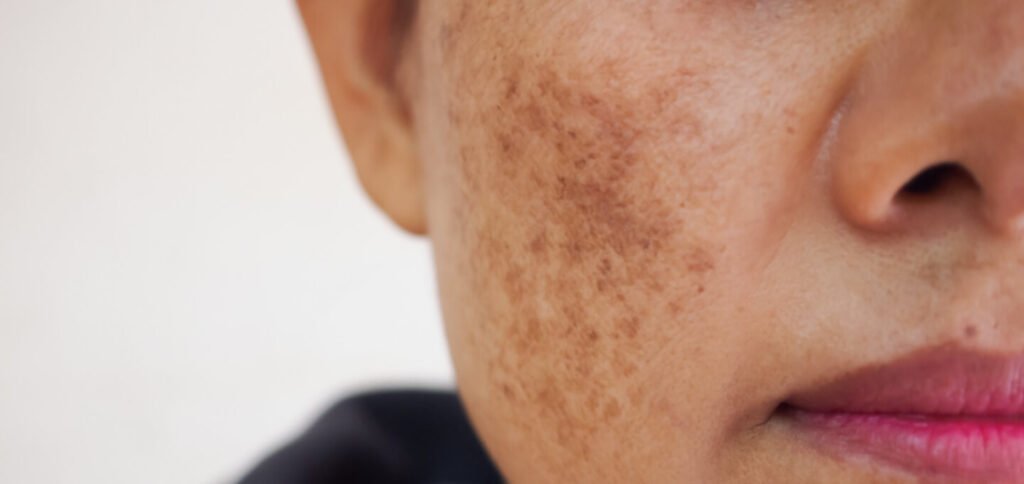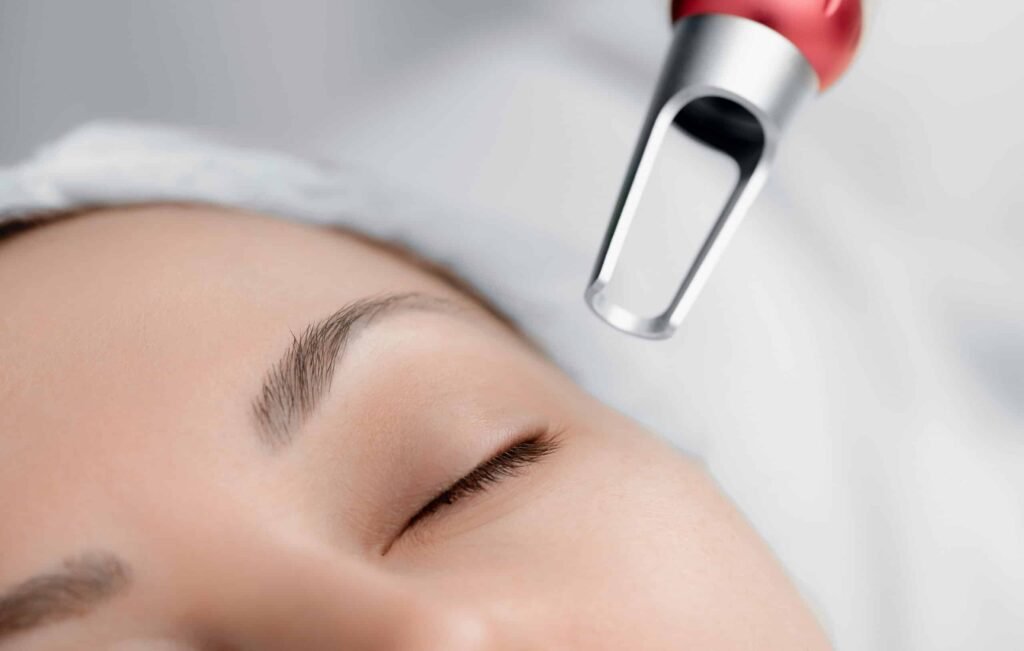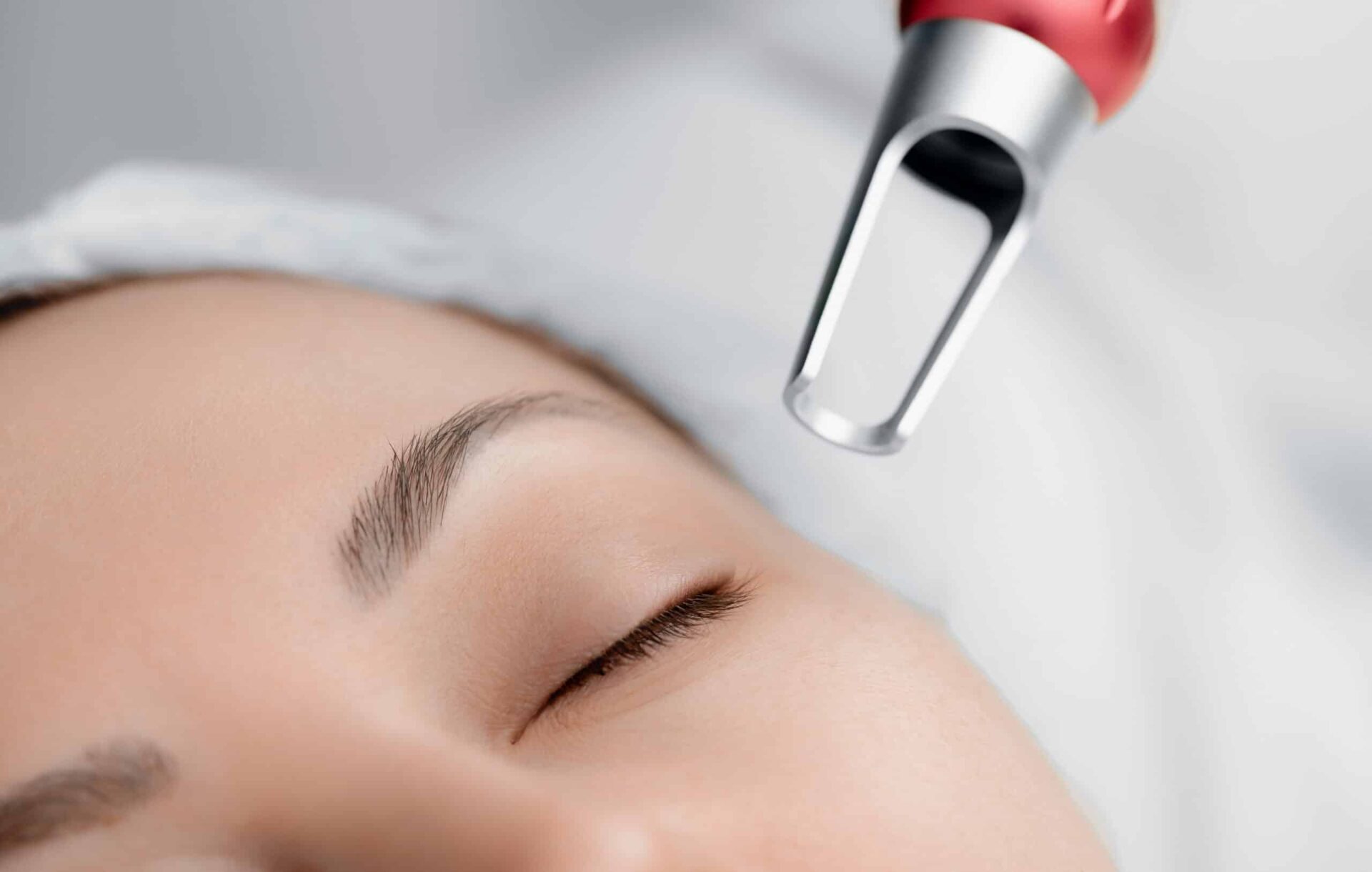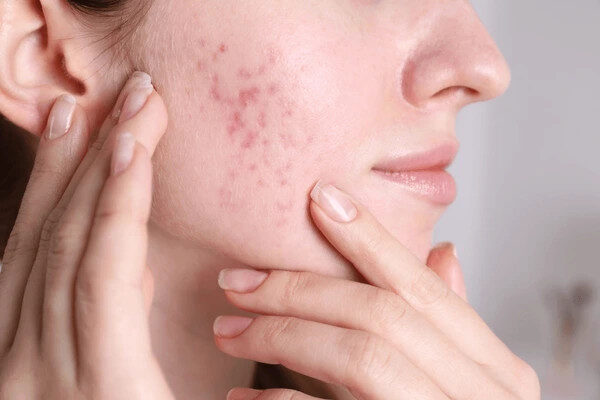
If you’ve ever glanced in the mirror and noticed dark spots, patches, or freckles that seem to have appeared overnight, you’re not alone. Pigmentation issues are common, especially in regions like Malaysia, where sun exposure is a daily reality.
Laser therapy is one of the most effective treatments to deal with different types of pigmentation. However, not all pigmentation is the same, and treating it effectively requires understanding its type and choosing the right laser therapy.
Laser Pigmentation Treatment Depends on the Root Cause
Melanin is our body’s natural way of protecting us from the sun. But when melanin goes into overdrive or starts settling unevenly in the skin, that’s when you get those unwanted patches, dark spots, or blotchy tones.
So, what causes this imbalance?
Sun Exposure
UV rays from the sun stimulate your skin’s melanocytes (the melanin-producing cells) to produce more pigment. Repeated sun exposure can lead to persistent pigmentation like sunspots, freckles, and solar lentigines.
Hormonal Changes
Melasma is a form of pigmentation closely tied to hormonal shifts. Estrogen and progesterone, two key hormones in women, can trigger excess melanin production when elevated. That’s why melasma is more common during pregnancy, while on birth control pills, or around menopause.
Skin Injuries
You know those dark marks that stick around long after a pimple’s gone? That’s post-inflammatory hyperpigmentation. It’s your skin’s response to inflammation or injury. Whether from acne, eczema, cuts, burns, or even overly aggressive cosmetic treatments, the trauma stimulates melanin production in the affected area.
Genetics
Sometimes, pigmentation is just in your blood. Conditions like freckles (ephelides) and Hori’s nevus are more common in certain ethnic groups and families. If your parents or siblings have a certain pigmentation pattern, chances are you might develop it too.
So, Why Does All This Matter?
Because not all pigmentation responds to the same treatments.
What works for melasma might worsen PIH. Lasers that fade sunspots can backfire on deeper dermal pigmentation like Hori’s nevus. That’s why identifying the underlying cause isn’t just important—it’s essential.
Common Types of Pigmentation and Their Laser Treatments
Knowing what kind you have helps your doctor pick the right laser, not just any laser.
Melasma

Melasma manifests as symmetrical, brownish patches, often on the cheeks, forehead, and upper lip. It’s prevalent among women and is frequently triggered by hormonal changes, sun exposure, or certain medications.
Best lasers:
- Pico laser is a standout here. Its precision and gentleness make it one of the few lasers that can treat melasma safely, especially on darker skin.
- Fractional CO₂ Laser is sometimes used in severe or resistant cases, but it must be handled cautiously. Over-treatment can worsen melasma, so only experienced doctors should consider this.
- IPL is not recommended for melasma—it can make it worse by triggering inflammation or rebound pigmentation.
Sunspots (Solar Lentigines)
Sunspots are flat, brown spots that appear on sun-exposed areas like the face, hands, and shoulders. They result from prolonged UV exposure and are more common as we age.
Best lasers:
- IPL (Intense Pulsed Light) is often the first choice for sunspots. It works well on lighter skin tones (Fitzpatrick I–III) and can fade brown spots with minimal downtime.
- For deeper or more stubborn sunspots on darker skin tones (Fitzpatrick IV–V), Pico laser is a safer alternative. Its ultra-fast pulses break down pigment without heating the skin too much, lowering the risk of burns or PIH (post-inflammatory hyperpigmentation).
Post-Inflammatory Hyperpigmentation (PIH)
PIH appears as darkened patches following skin inflammation or injury, such as acne or eczema. It’s more prevalent in individuals with darker skin tones. Overly aggressive treatments can worsen PIH. Always consult with a qualified professional.
Best lasers:
- Pico laser again wins here for its safety and efficacy in targeting pigment without irritating the skin. It can speed up the fading process without triggering new inflammation.
- In some cases, Fractional CO₂ Laser may help if PIH is combined with acne scars, but again, only when used conservatively.
Freckles (Ephelides)
Freckles are small, flat, brown marks that become more prominent with sun exposure. They’re common in individuals with fair skin and often have a genetic component.
Best lasers:
- IPL is great for freckles, especially if you have lighter skin. Multiple sessions can gently fade freckles without harsh side effects.
- Pico laser is another excellent option—effective even on darker skin tones and usually needing fewer sessions than IPL.
Vascular Pigmentation
While not brown, red-based pigmentation like port wine stains or persistent rosacea-related redness often needs a different laser approach.
Best laser:
- Pulsed Dye Laser (PDL) is the gold standard for red pigmentation. It targets blood vessels under the skin without damaging surrounding tissue. It’s especially helpful for redness that doesn’t fade with creams or time.
When Multiple Pigmentation Types Coexist
It’s not uncommon to have more than one type of pigmentation simultaneously. For instance, melasma can coexist with sunspots or PIH. In such cases, a comprehensive treatment plan tailored to address each type is essential. Consulting with a dermatologist ensures accurate diagnosis and effective treatment sequencing.
What Affects How Well Laser Treatment Works?

Skin Tone
Your skin tone plays a massive role in determining how effective and safe a laser treatment will be. People with Fitzpatrick Skin Types IV to VI—which includes most Malaysians—have more melanin in their skin. That means a higher risk of complications like burns, blisters, and post-inflammatory hyperpigmentation if the wrong laser is used.
Inexperienced providers might underestimate the skin’s melanin response, leading to side effects. So if your skin tends to tan easily or you’ve had pigmentation issues before, speak up. The laser setting that works for your fair-skinned friend won’t work the same for you—and that’s okay.
Laser Type and Settings
Pigmentation comes in different forms and lasers are not all created equal. Fractional lasers can help with melasma or PIH but require extra caution on darker skin. Picosecond lasers are emerging as a gold standard for safety and precision, delivering energy in ultra-short pulses that shatter pigment without excessive heat.
What matters most isn’t just the laser brand—it’s the wavelength, pulse duration, fluence (energy level), and spot size. These settings need to be carefully tailored to your skin tone and the type of pigmentation being treated.
Practitioner Skill
Even the best laser in the world won’t give you great results if the person operating it isn’t trained properly. A skilled aesthetic doctor or dermatologist knows how to:
- Select the appropriate laser and settings based on your Fitzpatrick skin type
- Recognize the underlying cause of pigmentation (melasma vs sunspots vs PIH)
- Manage your skin’s reaction during and after treatment
- Spot early signs of side effects like hypopigmentation or rebound hyperpigmentation
Choose providers with a medical background, laser-specific training, and a track record treating skin tones similar to yours.
Aftercare
Laser treatments aren’t magic buttons. They trigger a healing response in your skin—and that means your post-treatment care matters just as much as the procedure itself.
Here’s what that typically includes:
- Sun avoidance for at least a week (preferably longer)—because UV exposure post-laser can undo all your progress
- Broad-spectrum SPF 50 sunscreen, reapplied every few hours
- Moisturizers and barrier repair creams to soothe the skin and prevent dryness or irritation
- Avoiding active ingredients like acids or retinoids until your doctor says it’s safe
Skipping aftercare can lead to redness, flaking, or new pigmentation forming in treated areas which will set back your skin’s recovery.
Aesthetic Clinic in Penang
Try Different Lasers for Your Pigmentation with A Klinik Signature

Addressing pigmentation concerns effectively depends on accurate identification and appropriate treatment selection. Laser therapies offer promising results, but their success is contingent upon understanding the specific pigmentation type and tailoring the approach accordingly. Always seek guidance from qualified professionals to embark on a safe and effective pigmentation treatment journey.






